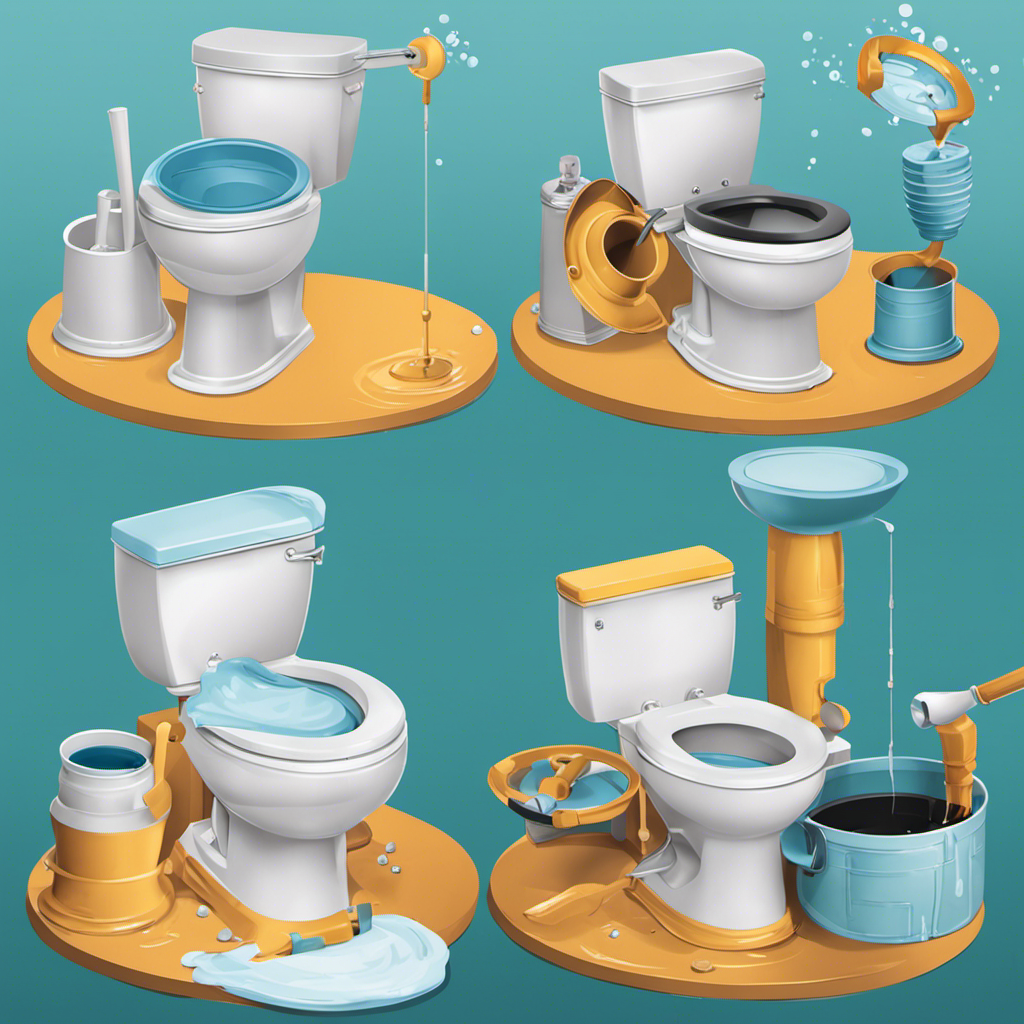Do you ever wonder how much toilet paper you go through in a year? Prepare to be amazed by the staggering amount!
In this article, we will delve into the data-driven world of toilet paper consumption. From global statistics to tips on reducing waste, we will uncover the facts and figures behind this everyday necessity.
So grab a roll and get ready to be enlightened about just how much toilet paper is used per year.
Key Takeaways
- Toilet paper consumption varies significantly across countries, with the average person in the US using approximately 141 rolls per year and the average person in Japan using about 38 rolls per year.
- Cultural factors, such as hygiene practices and traditions, strongly influence toilet paper usage patterns in different regions.
- The COVID-19 pandemic and panic-buying led to a significant increase in toilet paper sales, causing a shortage and impacting consumption trends.
- Sustainable alternatives, such as bamboo toilet paper and eco-friendly packaging options, can help reduce the environmental impact of toilet paper usage.
Toilet Paper Consumption Trends
You’ll be surprised by the recent trends in toilet paper consumption.
The impact of COVID-19 on toilet paper demand has led to a significant increase in usage. With the onset of the pandemic, panic-buying and stockpiling became prevalent, resulting in a toilet paper shortage. People feared the possibility of extended lockdowns and limited access to essential supplies.
As a result, toilet paper sales skyrocketed, and manufacturers struggled to meet the unprecedented demand. According to data, toilet paper consumption in the United States alone increased by 845% during the peak of the pandemic. This surge in demand not only strained the supply chain but also had a lasting impact on consumer behavior.
While the panic-buying has subsided, the effects of this heightened awareness and stockpiling mentality continue to shape toilet paper consumption patterns.
Factors Affecting Toilet Paper Usage
When it comes to factors affecting toilet paper usage, there are several things that can impact how much is utilized on a daily basis. Understanding these factors can help us better understand the demand for toilet paper and the cultural differences that influence it.
Here are a few key factors to consider:
-
Personal hygiene practices: Different cultures may have varying standards of cleanliness, leading to differences in toilet paper usage.
-
Availability and access: The availability of toilet paper and access to it can influence how much is used. In areas where it is scarce, people may use less.
-
Cultural norms and traditions: Cultural beliefs and practices can also impact toilet paper usage. For example, bidets are commonly used in some countries, reducing the need for toilet paper.
Considering these factors, it becomes clear that toilet paper usage is influenced by a variety of cultural and practical considerations.
Now, let’s delve into the global toilet paper consumption statistics.
Global Toilet Paper Consumption Statistics
Did you know that annual toilet paper usage varies significantly across different regions?
Understanding regional consumption patterns is crucial when assessing the environmental impact of toilet paper production and usage.
In this discussion, we will:
- Explore the data on annual toilet paper usage
- Examine the regional consumption patterns
- Analyze the environmental impact assessment of this everyday necessity.
Annual Toilet Paper Usage
To understand how much toilet paper you go through in a year, it’s important to consider the annual toilet paper usage. In terms of annual toilet paper sales, the global market has been steadily increasing over the years. According to data from Statista, the global toilet paper sales reached a staggering 30 billion U.S. dollars in 2020.
When looking at toilet paper usage per capita, the numbers vary across countries. For example, in the United States, the average person uses approximately 141 rolls of toilet paper per year. In contrast, in Japan, the average person uses only about 38 rolls per year. These variations can be attributed to cultural habits, personal preferences, and environmental factors.
Understanding these consumption patterns can help identify trends and inform sustainable practices in toilet paper production and usage. Now let’s explore the regional consumption patterns in more detail.
Regional Consumption Patterns
Regional toilet paper consumption patterns vary significantly across different countries, reflecting cultural norms, personal preferences, and environmental factors.
Cultural influences play a significant role in determining the amount of toilet paper used in a particular region. For instance, in Western countries, where cleanliness is highly valued, toilet paper consumption tends to be higher compared to regions where bidets or water-based cleaning methods are more prevalent.
Additionally, regional toilet paper production also affects consumption patterns. Countries with a significant toilet paper production capacity tend to have higher consumption rates.
Environmental factors, such as the availability of water resources and awareness of sustainability, also impact toilet paper usage.
Understanding these regional variations in toilet paper consumption is crucial for both manufacturers and policymakers to ensure sustainable production and usage practices.
Environmental Impact Assessment
Now that you understand the regional consumption patterns of toilet paper, let’s delve into the environmental impact assessment of this everyday product.
It is crucial to consider the environmental consequences of toilet paper production and usage, as well as explore ways to reduce waste and promote sustainable manufacturing.
To assess the environmental impact, we need to consider factors such as deforestation, water usage, and energy consumption. Here are some key points to highlight:
- Deforestation: Toilet paper production heavily relies on wood pulp, leading to significant deforestation in some regions.
- Water Usage: The manufacturing process requires substantial amounts of water, putting pressure on local water resources.
- Energy Consumption: Toilet paper production consumes a substantial amount of energy, mainly for pulp processing and transportation.
To address these concerns and promote sustainable manufacturing, innovative practices such as using recycled materials, implementing water-saving technologies, and adopting renewable energy sources can play a vital role in reducing waste and minimizing the environmental impact of toilet paper production.
Environmental Impact of Toilet Paper Usage
The environmental impact of toilet paper usage can be significant due to the high demand and production of this everyday essential. Toilet paper production relies heavily on the use of trees, accounting for about 15% of deforestation worldwide. Each year, approximately 27,000 trees are cut down just to meet the toilet paper needs of the global population. This massive deforestation contributes to habitat loss, soil erosion, and a decrease in biodiversity.
Moreover, the production process requires significant amounts of water and energy, further straining natural resources and contributing to greenhouse gas emissions. Transitioning to more sustainable alternatives, such as recycled or bamboo toilet paper, can help reduce the environmental impact.
Now let’s explore how toilet paper usage differs in various countries.
Toilet Paper Usage in Different Countries
You may be curious to know how toilet paper usage varies across different countries. When it comes to toilet paper production and consumption, cultural differences play a significant role. Here are some interesting facts about toilet paper usage worldwide:
-
In the United States, the average person uses about 141 rolls of toilet paper per year.
-
Japan, known for its advanced technology, has high-tech toilets that reduce the need for excessive toilet paper usage.
-
In many European countries, bidets are commonly used, reducing the reliance on toilet paper.
These variations in toilet paper usage reflect the cultural norms and preferences of different countries. Understanding these differences can help us gain insight into the global impact of toilet paper production and consumption.
Now, let’s explore some tips for reducing toilet paper waste.
Tips for Reducing Toilet Paper Waste
When it comes to reducing toilet paper waste, there are several key points to consider.
First, exploring alternatives to toilet paper can be a sustainable option.
Second, using less toilet paper per use can significantly decrease the amount of waste generated.
Finally, opting for eco-friendly packaging options can further contribute to a greener bathroom routine.
Alternatives to Toilet Paper
There are several alternatives to toilet paper that can be used. Here are some eco-friendly options to consider:
-
Bidet usage: Installing a bidet in your bathroom can significantly reduce the need for toilet paper. Bidets use water to clean, promoting better hygiene and reducing waste.
-
Family cloth: This reusable option involves using cloth wipes instead of toilet paper. These wipes can be washed and reused, reducing the environmental impact.
-
Bamboo toilet paper: Made from sustainable bamboo, this type of toilet paper is biodegradable and renewable. It is also softer and stronger than traditional toilet paper.
By exploring these alternatives, you can make a positive impact on the environment while still maintaining personal hygiene.
However, if you prefer to continue using toilet paper, there are ways to reduce your usage per use.
Using Less per Use
Using smaller portions of toilet paper can help reduce waste and be more environmentally friendly. By using less toilet paper per use, you can contribute to reducing the amount of waste that ends up in landfills.
According to data, the average person uses about 100 rolls of toilet paper per year. Imagine the impact if everyone used just a little bit less each time.
Sustainable options such as eco-friendly toilet paper made from recycled materials or bamboo can also help in reducing waste. These alternatives are not only better for the environment but also softer and more durable.
Eco-Friendly Packaging Options
You can make a positive impact on the environment by choosing eco-friendly packaging options. Sustainable packaging options and reusable alternatives not only reduce waste but also conserve resources. Here are three reasons why you should consider eco-friendly packaging:
-
Reduced waste: Sustainable packaging options, such as biodegradable materials and minimalistic designs, help minimize the amount of waste generated. By choosing packaging that can be easily recycled or decomposed, you contribute to a cleaner and healthier environment.
-
Resource conservation: Eco-friendly packaging often utilizes renewable materials and energy-efficient manufacturing processes. This helps conserve natural resources like water and energy, reducing the overall environmental impact.
-
Long-term cost savings: While eco-friendly packaging options may have a slightly higher upfront cost, they often provide long-term savings. Reusable alternatives, such as glass jars or cloth bags, can be used multiple times, reducing the need for constant repurchasing and saving you money in the long run.
Conclusion
In conclusion, after thoroughly analyzing the data and considering various factors, it’s evident that the consumption of toilet paper per year is significantly higher than one might expect.
The global statistics reveal a staggering amount of toilet paper usage, showcasing the impact on the environment.
It’s crucial for individuals and countries to adopt measures to reduce this waste, such as using alternative methods or implementing more sustainable practices.
By addressing this issue, we can make a significant difference in preserving our planet’s resources.










